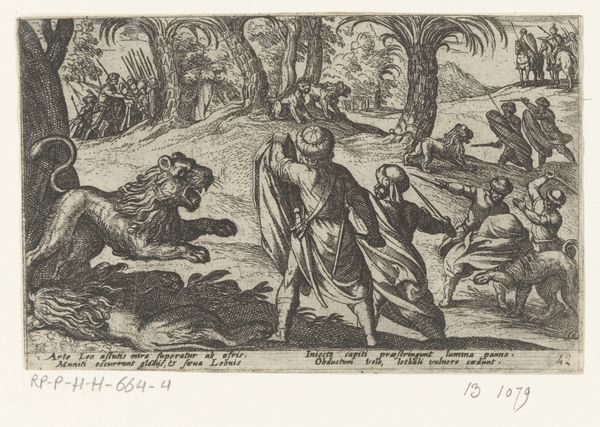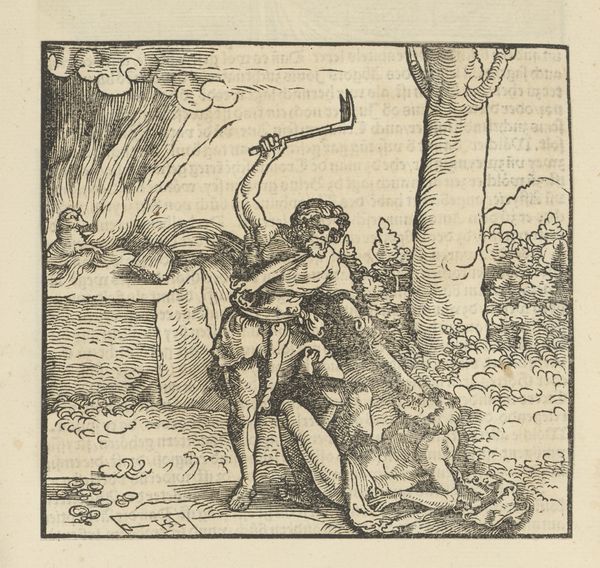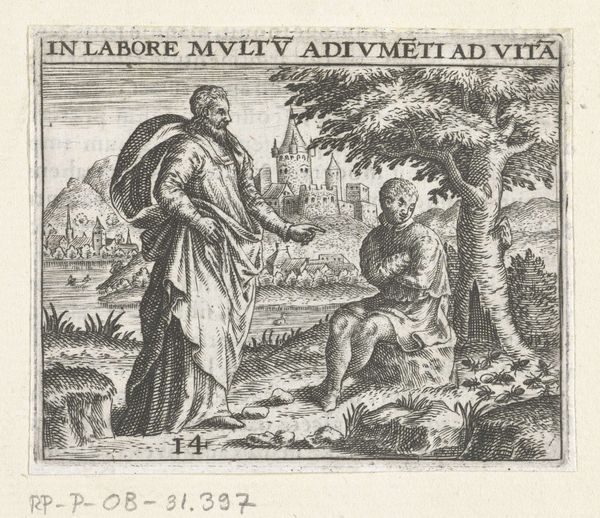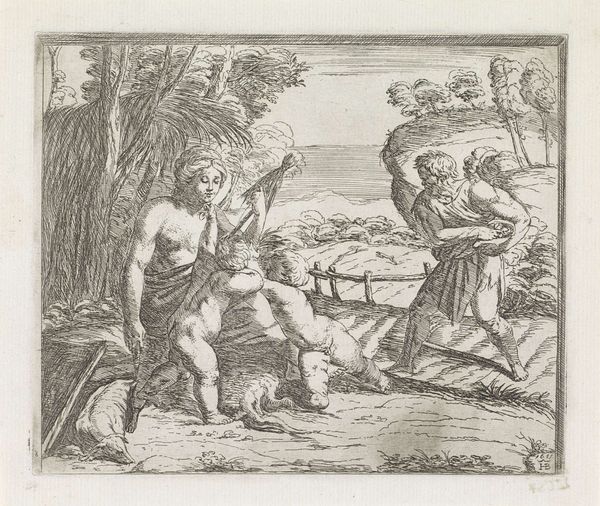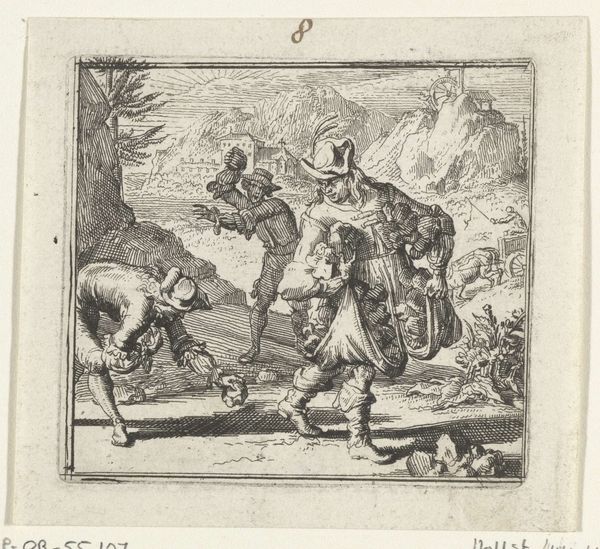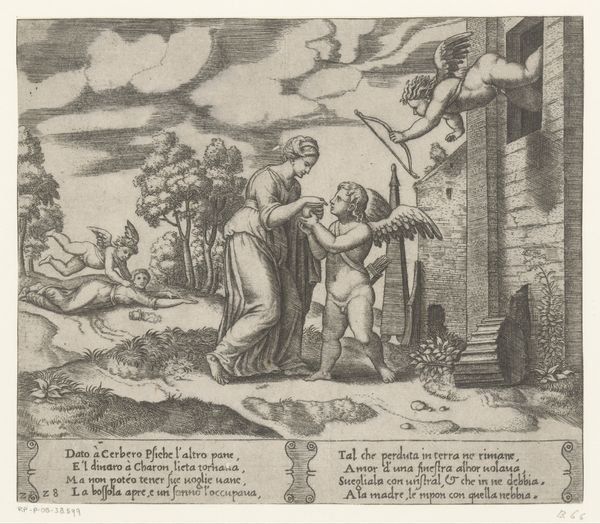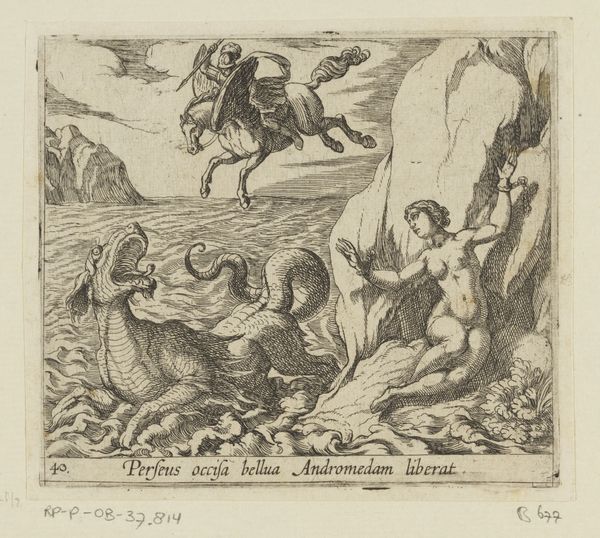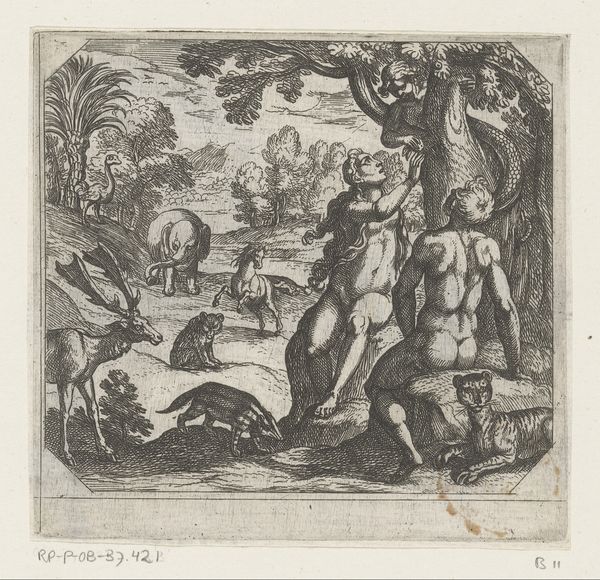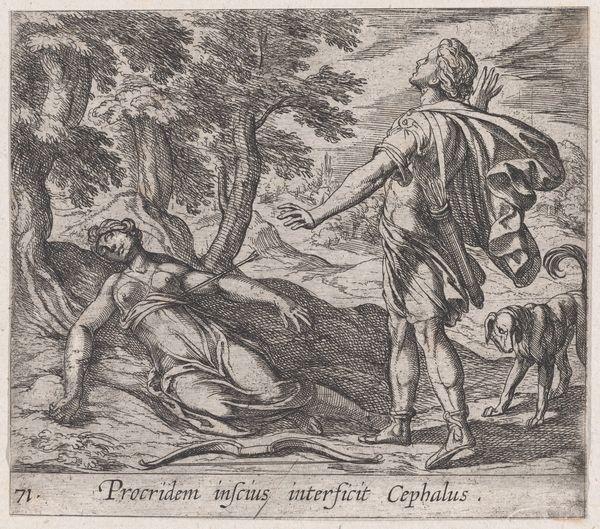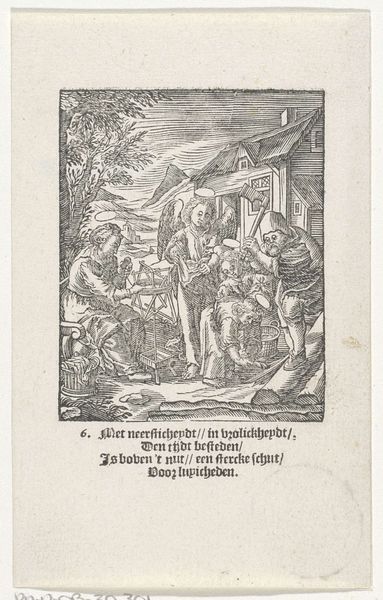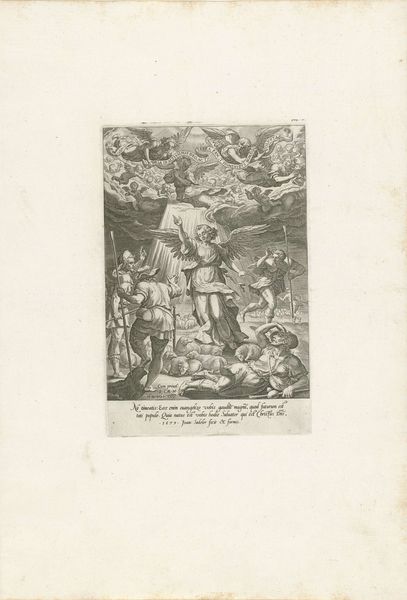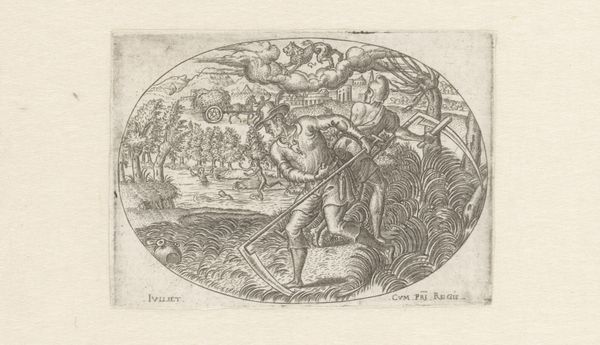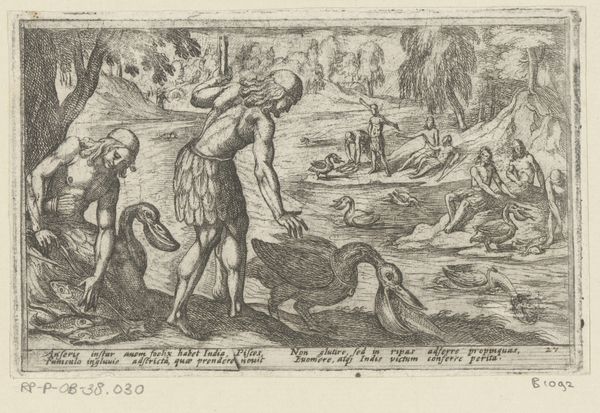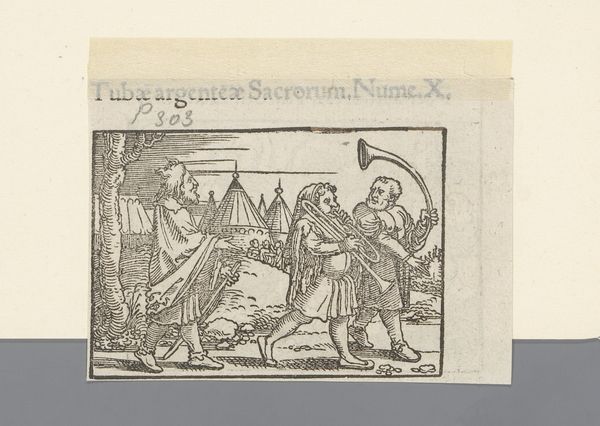
print, woodcut
# print
#
figuration
#
woodcut
#
history-painting
#
northern-renaissance
Dimensions: height 50 mm, width 70 mm
Copyright: Rijks Museum: Open Domain
Editor: Here we have a 16th-century woodcut print called "The Sacrifice of Abraham," created around 1530-1533. It’s currently housed in the Rijksmuseum. The stark black and white imagery and the dramatic scene feel so intense. How do you interpret this work? Curator: The story itself—Abraham's willingness to sacrifice his son Isaac—is a cornerstone of faith and obedience in Western traditions, but what happens when you view this through a postcolonial or feminist lens? The power dynamics here are stark: a father's authority, divine command, a son's subjugation. The scene almost normalises obedience to seemingly irrational, patriarchal authority, doesn't it? Editor: I see what you mean. It’s hard to look at it without questioning that kind of power dynamic, especially today. It is a dramatic, emotional image on the surface. But looking at it, what was the intended impact on the 16th-century audience who engaged with it? Curator: Precisely. During the Reformation, images like these were instruments. This image likely was used as didactic, reminding viewers about devotion and piety. Yet, who controlled that narrative, who benefitted? Can art history engage contemporary debates surrounding religion and power? Consider those silenced or harmed. The image then transforms into an unsettling meditation on the intersection between belief, sacrifice, and control. Editor: I guess I hadn't thought about that, I focused mainly on Abraham and his faith. Curator: So, considering all that we see—a very gendered and racialized image of unquestioning sacrifice and service—do you view this "sacrifice" with a more critical lens now? Editor: Definitely! I learned that it's important to look at the ways these historic, cultural factors influence and construct meaning and consider ethical concerns around faith, obedience, and potentially oppressive hierarchies.
Comments
No comments
Be the first to comment and join the conversation on the ultimate creative platform.
